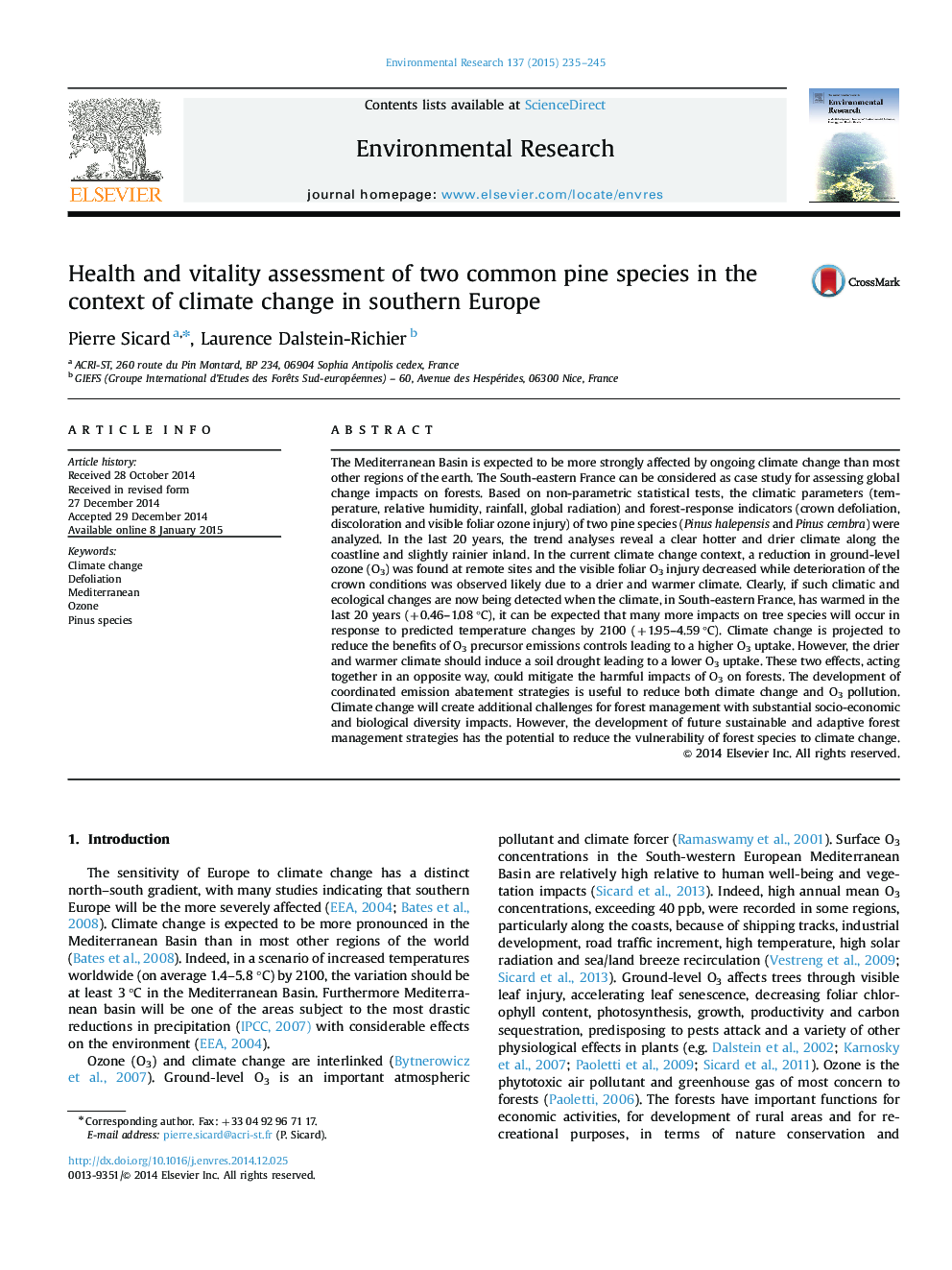| کد مقاله | کد نشریه | سال انتشار | مقاله انگلیسی | نسخه تمام متن |
|---|---|---|---|---|
| 6352692 | 1622564 | 2015 | 11 صفحه PDF | دانلود رایگان |
- We assess climate change impacts on forests: South-eastern France as case study in the last 20 years.
- We detect and estimate trends for O3 concentrations, climatic parameters and visible injury.
- We establish a state-of-the-art of the health of 2 common pine species in a context of climate change.
- We use two valuable bio-indicator species for O3 stress: Pinus halepensis and Pinus cembra.
- Deterioration of crown conditions: climate change creates additional challenges for forest.
The Mediterranean Basin is expected to be more strongly affected by ongoing climate change than most other regions of the earth. The South-eastern France can be considered as case study for assessing global change impacts on forests. Based on non-parametric statistical tests, the climatic parameters (temperature, relative humidity, rainfall, global radiation) and forest-response indicators (crown defoliation, discoloration and visible foliar ozone injury) of two pine species (Pinus halepensis and Pinus cembra) were analyzed. In the last 20 years, the trend analyses reveal a clear hotter and drier climate along the coastline and slightly rainier inland. In the current climate change context, a reduction in ground-level ozone (O3) was found at remote sites and the visible foliar O3 injury decreased while deterioration of the crown conditions was observed likely due to a drier and warmer climate. Clearly, if such climatic and ecological changes are now being detected when the climate, in South-eastern France, has warmed in the last 20 years (+0.46-1.08 °C), it can be expected that many more impacts on tree species will occur in response to predicted temperature changes by 2100 (+1.95-4.59 °C). Climate change is projected to reduce the benefits of O3 precursor emissions controls leading to a higher O3 uptake. However, the drier and warmer climate should induce a soil drought leading to a lower O3 uptake. These two effects, acting together in an opposite way, could mitigate the harmful impacts of O3 on forests. The development of coordinated emission abatement strategies is useful to reduce both climate change and O3 pollution. Climate change will create additional challenges for forest management with substantial socio-economic and biological diversity impacts. However, the development of future sustainable and adaptive forest management strategies has the potential to reduce the vulnerability of forest species to climate change.
Journal: Environmental Research - Volume 137, February 2015, Pages 235-245
